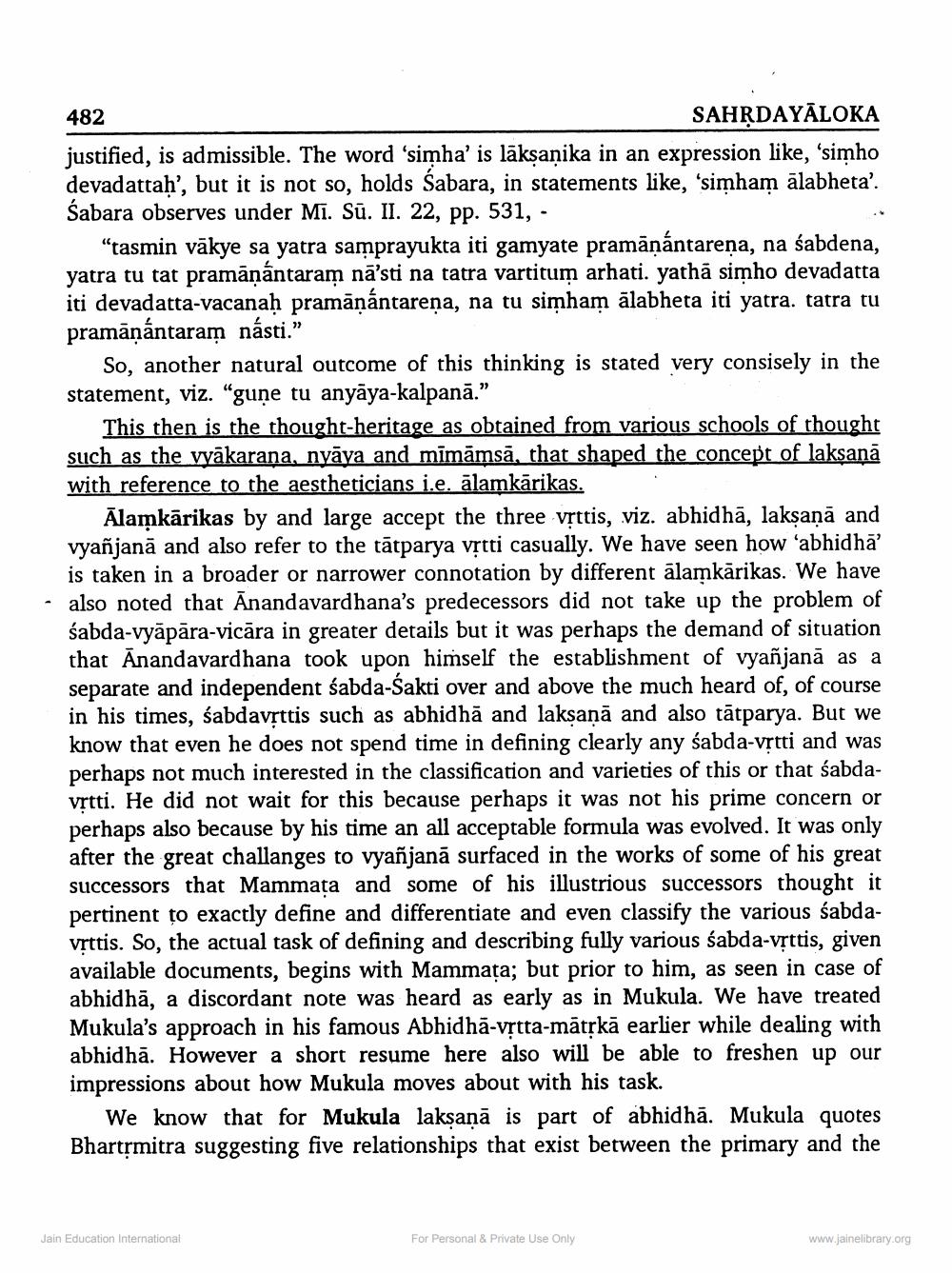________________
482
SAHṚDAYĀLOKA
justified, is admissible. The word 'simha' is lākṣaṇika in an expression like, 'simho devadattaḥ', but it is not so, holds Sabara, in statements like, 'simham alabheta'. Śabara observes under Mi. Sū. II. 22, pp. 531,
"tasmin vākye sa yatra samprayukta iti gamyate pramāṇántareṇa, na śabdena, yatra tu tat pramāṇántaram nā'sti na tatra vartitum arhati. yathā simho devadatta iti devadatta-vacanaḥ pramāṇántareṇa, na tu simham ālabheta iti yatra. tatra tu pramāṇántaram násti."
So, another natural outcome of this thinking is stated very consisely in the statement, viz. "gune tu anyāya-kalpanā."
This then is the thought-heritage as obtained from various schools of thought such as the vyakaraṇa, nyāya and mīmāmsā, that shaped the concept of lakṣaṇā with reference to the aestheticians i.e. ālamkārikas.
Alamkarikas by and large accept the three vṛttis, viz. abhidha, lakṣaṇā and vyañjana and also refer to the tatparya vṛtti casually. We have seen how 'abhidha' is taken in a broader or narrower connotation by different alamkarikas. We have also noted that Anandavardhana's predecessors did not take up the problem of śabda-vyāpāra-vicara in greater details but it was perhaps the demand of situation that Anandavardhana took upon himself the establishment of vyañjanā as a separate and independent sabda-Sakti over and above the much heard of, of course in his times, sabdavṛttis such as abhidha and lakṣaṇā and also tatparya. But we know that even he does not spend time in defining clearly any śabda-vṛtti and was perhaps not much interested in the classification and varieties of this or that sabdavṛtti. He did not wait for this because perhaps it was not his prime concern or perhaps also because by his time an all acceptable formula was evolved. It was only after the great challanges to vyañjanā surfaced in the works of some of his great successors that Mammata and some of his illustrious successors thought it pertinent to exactly define and differentiate and even classify the various śabdavṛttis. So, the actual task of defining and describing fully various sabda-vṛttis, given available documents, begins with Mammața; but prior to him, as seen in case of abhidha, a discordant note was heard as early as in Mukula. We have treated Mukula's approach in his famous Abhidha-vṛtta-mātṛkā earlier while dealing with abhidha. However a short resume here also will be able to freshen up our impressions about how Mukula moves about with his task.
We know that for Mukula lakṣaṇā is part of abhidhā. Mukula quotes Bhartṛmitra suggesting five relationships that exist between the primary and the
Jain Education International
For Personal & Private Use Only
www.jainelibrary.org




